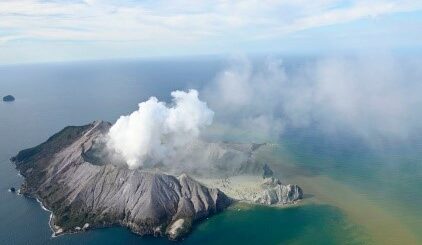National Current Affairs – UPSC/IAS Exams- 11th September 2019
National Animal Disease Control Programme
Topic: Science and Technology
In News: Prime Minister Narendra Modi launched the National Animal Disease Control Programme (NACDP) to control and eradicate the Foot & Mouth Disease (FMD) and Brucellosis amongst the livestock in the country.
More on the Topic:
- It is a fully Central Government sponsored programme will vaccinate over 600 million cattle in the country in an effort to mitigate the two diseases.
- Targets: To Vaccinate more than 500 Million Livestock including cattle, buffalo, sheep, goats and pigs against Foot and Mouth Disease (FMD).
- To Vaccinate 36 Million Female Bovine Calves annually in its fight against Brucellosis disease.
- Controlling of diseases by 2025, Eradication of it by 2030
About Foot and Mouth Disease and Brucellosis:
- Foot and mouth disease (FMD) is a severe, highly contagious viral disease of livestock that has a significant economic impact.
- The disease affects cattle, swine, sheep, goats and other cloven-hoofed ruminants.
- Virus contaminated facilities, contaminated vehicles, raw or improperly cooked garbage containing infected meat or animal products can also spread the virus of FMD.In rare cases, humans are also susceptible.
Brucellosis:
- Brucellosis is a bacterial disease caused by various Brucella species, which mainly infect cattle, swine, goats, sheep and dogs.
- Humans generally acquire the disease through direct contact with infected animals, by eating or drinking contaminated animal products, or by inhaling airborne agents.
- The majority of cases are caused by ingesting unpasteurized milk or cheese from infected goats or sheep.
Source: The Hindu
India-Nepal petroleum pipeline
Topic: International Relations
In News: PM Modi and Nepal PM jointly inaugurated Motihari-Amlekhganj petroleum product pipeline.
More on the Topic:
- The over 60 km-long pipeline is the first-ever cross-border petroleum product pipeline in the South Asia region.
- As of now, tankers carry petroleum products from India to Nepal as part of an arrangement which is in place since 1973.
- India-Nepal energy cooperation project is a symbol of close bilateral relations between India and Nepal. It will help to enhance the energy security of the region and substantially cut down on transit costs.
Source: The Hindu
7th Regional Comprehensive Economic Partnership (RCEP) Ministerial Meeting
Topic: Important International Groupings
In News: Recently, the 7th Regional Comprehensive Economic Partnership (RCEP) Ministerial Meeting was held in Bangkok to review developments in the RCEP negotiations.
More on the Topic:
- The trade deal is being negotiated by the 10-members from ASEAN group with their six free trade pact partners namely Australia, China, India, Japan, South Korea, and New Zealand.
- Once implemented, it would result in one of the largest free trade bloc accounting for 45% of the world’s population, and a combined GDP of about $21.3 trillion and 40% of the world trade.
- About 25 rounds of talks have been concluded so far but the members are yet to finalise the number of goods on which customs duty will be eliminated.
- Issues related Service sector are also to be finalised as India is demanding greater flexibility to promote trade in services among RCEP Countries.
Source: The Hindu
Skill Development Service
Topic: Government Initiatives
In News: In an effort to strengthen the skill development ecosystem in the country, the government has inducted the first batch of the Indian Skill Development Services (ISDS), the newest central government Group A services.
More on the Topic:
- The Indian Skill Development Service (ISDS) has 263 all India posts.
- As part of the training program, a complete overview of management and governance of skilling in particular, and functioning of the government system in general, will be offered.
- After this capsule, there will be a foundation course and then further training will be provided to the officers to enrich them with the knowledge and skills needed to run the skill eco-system.
- This service has been specially created for the training directorate of the ministry of skill development and entrepreneurship.
- The first batch joining the ISDS cadre has after qualifying the Indian Engineering Service Examination conducted by UPSC.
- The aim for this is to attract young and talented administrators towards institutionalizing the skill development environment in the country.
- The new service will give a new impetus to the government’s skilling initiative by significantly improving the efficiency and effective implementation of the various schemes.
Source: The Hindu
India’s Second Multi Modal Terminal on Ganga at Sahibganj
Topic: Infrastructure Development
In News: Recently, Prime Minister has inaugurated India’s second riverine Multi Modal terminal built at Sahibganj in Jharkhand.
More on the Topic:
- This is being constructed on National Waterway-1 (River Ganga) under Jal Marg Vikas Project (JMVP) aided by World Bank.
- The First MultiModal Terminal has been constructed at Varanasi over River Ganga.
Significance:
- Easier transportation of domestic coal from the local mines in Rajmahal area to various thermal power plants located along National Waterway-1.
- The connectivity to Kolkata, Haldia and further to the Bay of Bengal through convergence of Road-Rail-River Transport at Sahibganj.
- Connectivity to North-East States through Bangladesh by river-sea route.
- Industries in Jharkhand and Bihar will be opened up to the global market
- Accessibility for Indo-Nepal cargo connectivity through waterways route.
- Stone chips, fertilisers, cement and sugar are also expected to be transported through the terminal.
About National Waterway 1:
- Ganga-Bhagirathi-Hooghly river system from Allahabad to Haldia was declared as National Waterway No.1.
- The NW-1 passes through Uttar Pradesh, Bihar, Jharkhand and West Bengal and serves major cities and their industrial hinterlands.
Source: The Hindu
Equatorial Indian Ocean Monsoon Oscillation (EQUINOO)
Topic: Geography
In News: The Indian Institute of Sciences (IISc), Bengluru has released a study about Equatorial Indian Ocean Oscillation (EQUINOO) and its effects over Indian Summer Monsoon.
More on the Topic:
- Positive phase of Equatorial Indian Ocean Oscillation (EQUINOO) is favourable to the Indian summer monsoon.
- Summer monsoon of 2019 picked up steam despite a delayed start due to increased cloud formation which is a feature of a positive phase of EQUINOO.
About EQUINOO:
- It is an oscillation between enhanced cloud formation and rainfall over the Western Equatorial Indian Ocean (WEIO) and suppressed clouding over the Eastern Equatorial Indian Ocean (EEIO), west of Sumatra.
- A positive EQUINOO phase is when the surface sea temperature in WEIO is above 27.5 degree Celsius leading to enhanced clouding, which is then suppressed in the eastern equatorial Indian Ocean.
- Positive phase of the ‘Equatorial Indian Ocean Oscillation (EQUINOO) leads to Enhanced cloud formation and rainfall in western part of the equatorial ocean near the African coast, whereas this activity is suppressed near Sumatra.
- This phase produces good rains over India.
Source: The Hindu
Project Bal Basera
Topic: Government Policies
In News: ‘Bal Basera’ or a ‘Creche’ has been inaugurated for the welfare of Children of Construction Workers deployed at AIIMS Rishikesh.
More on the Topic:
- Project is being executed by ‘Central Public Works Department’ (CPWD), Ministry of Housing & Urban Affairs.
- CPWD has signed an MoU with CPWD OWA (Officers’ Wives Association), which shall run Bal Basera.
- The Creche shall accommodate about 35 Children.
- CPWD OWA, a socio cultural organization, is actively involved in the social welfare activities of weaker sections of society.
- It is providing monetary help to the families of CPWD employees in distress.
- It manages a large number of Bal Baseras and organizing health camps at construction sites, a day care centre.
About Central Public Works Department:
- CPWD is a premier Central Government authority in charge of public sector works, came into existence in 1854.
- It functions under the Ministry of Housing and Urban Affairs.
- It is the prime engineering department of Government of India
Source: PIB













